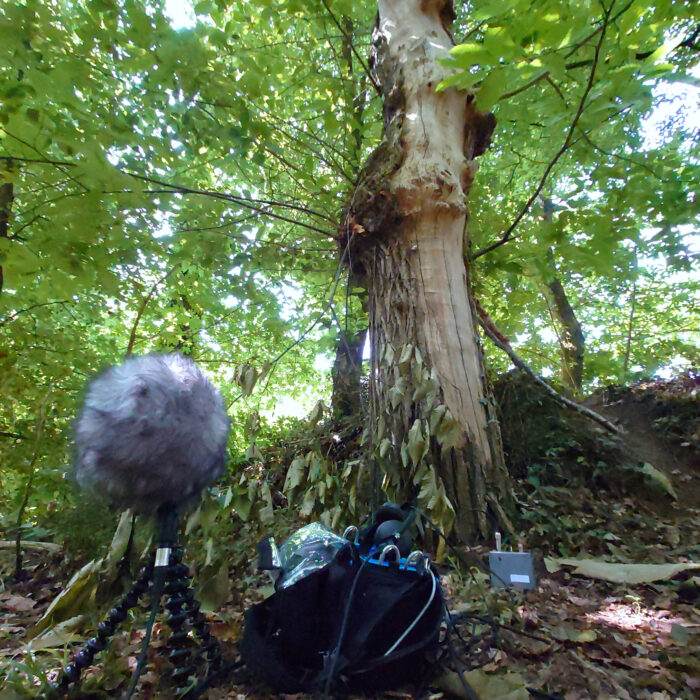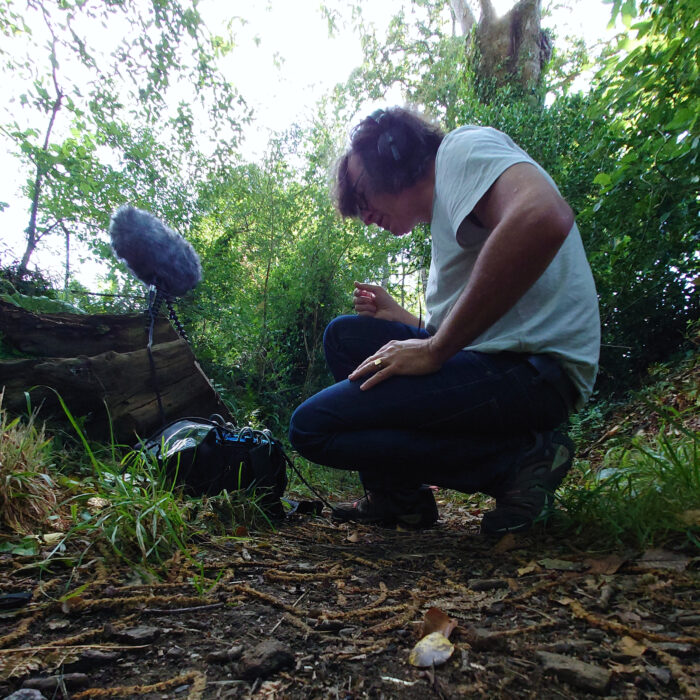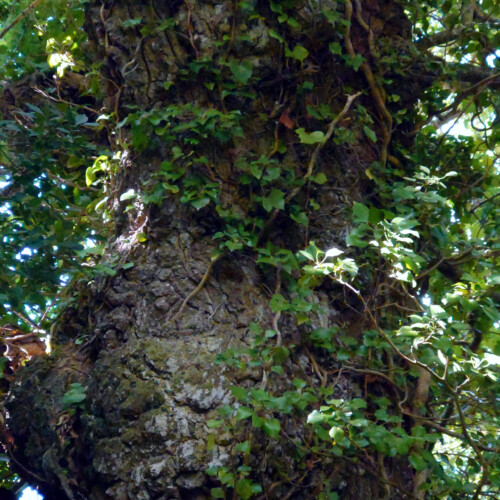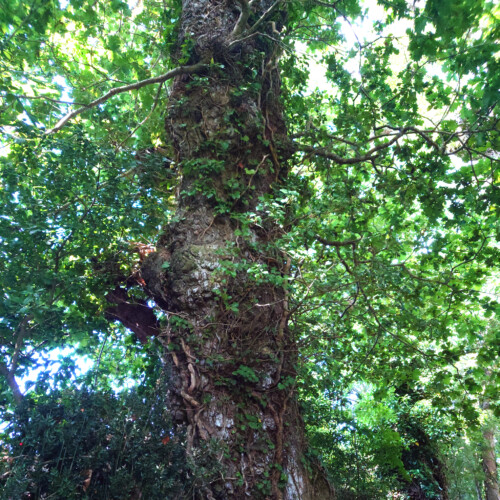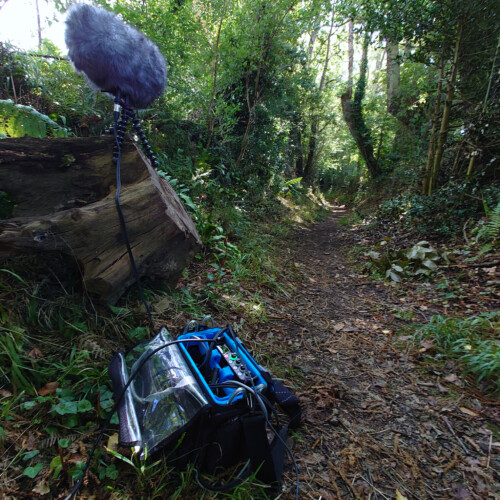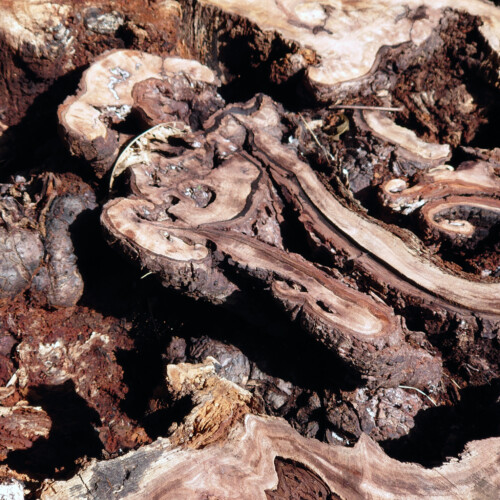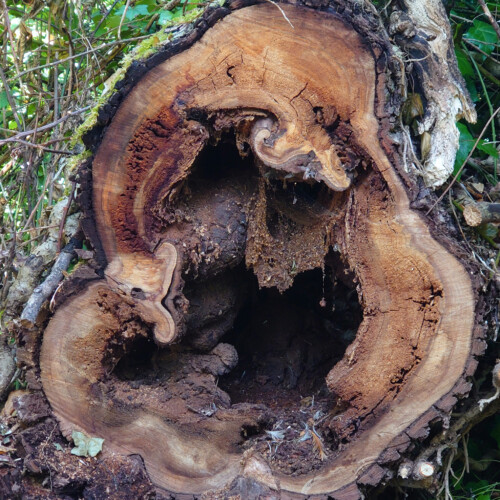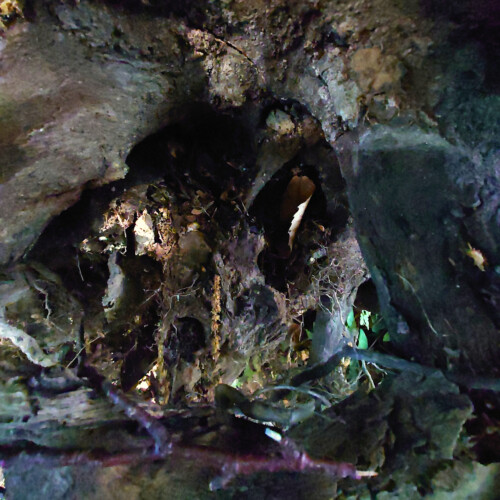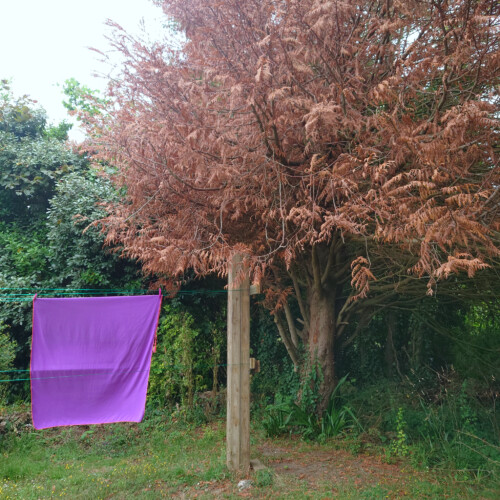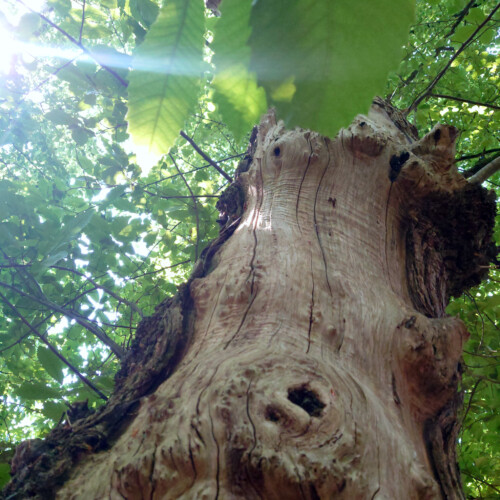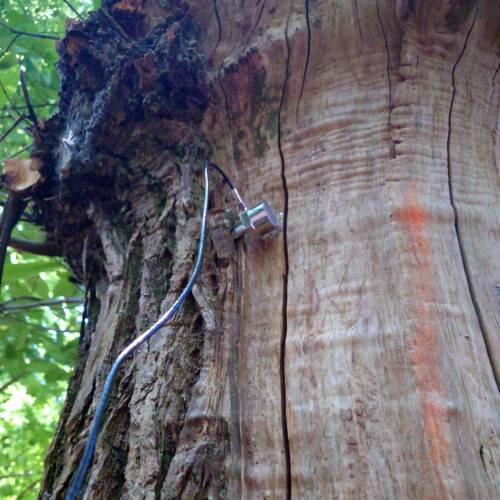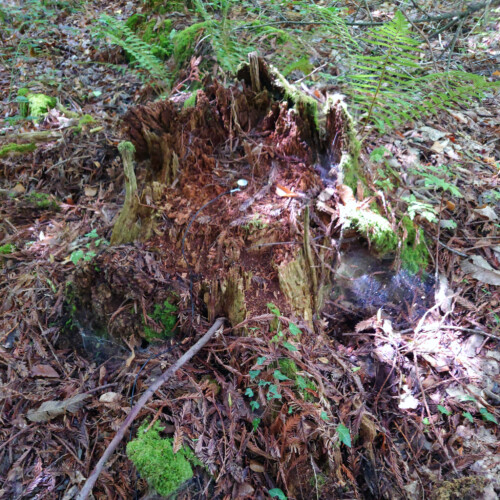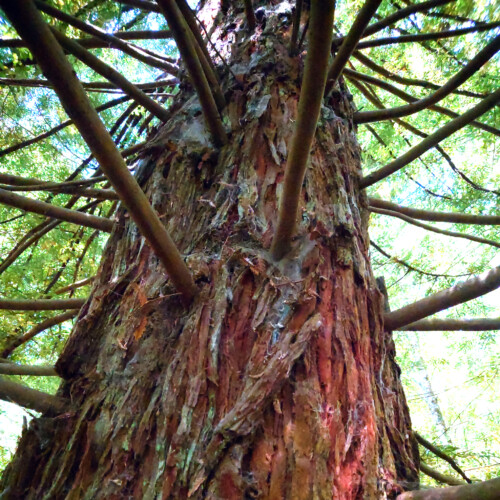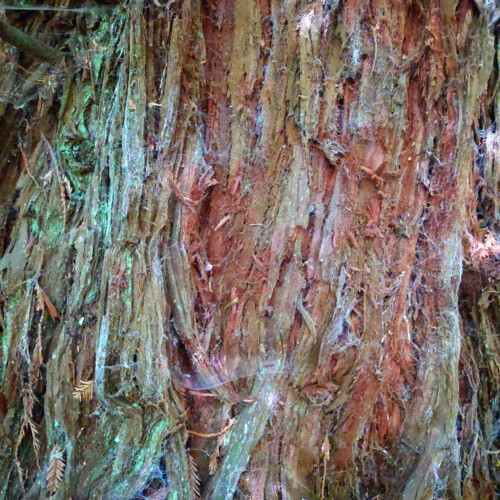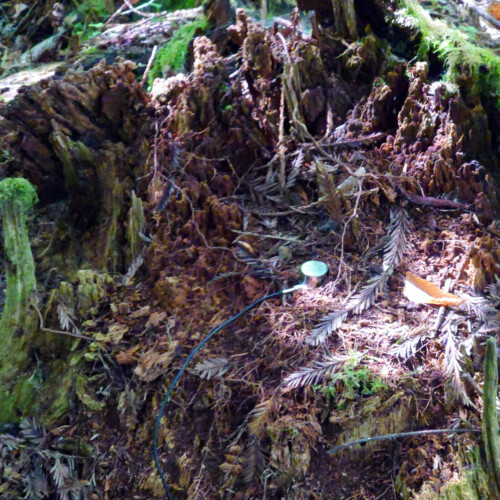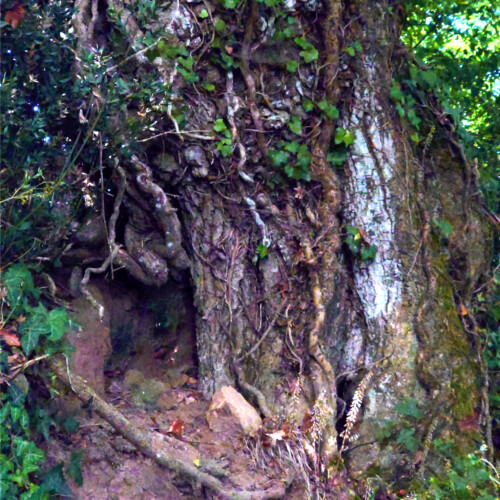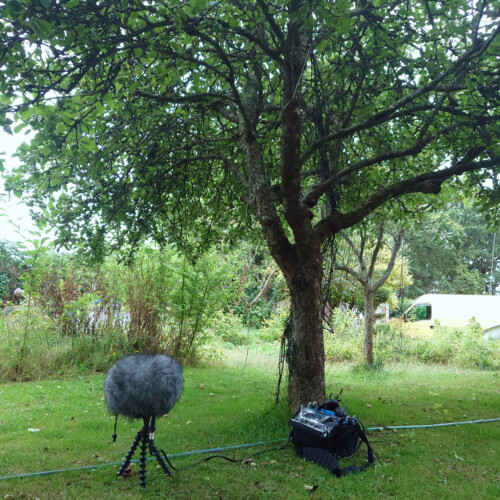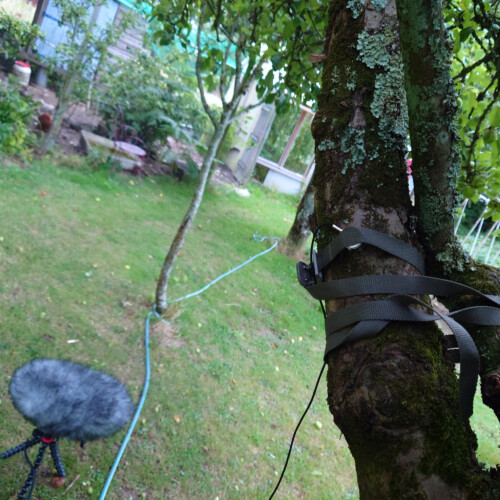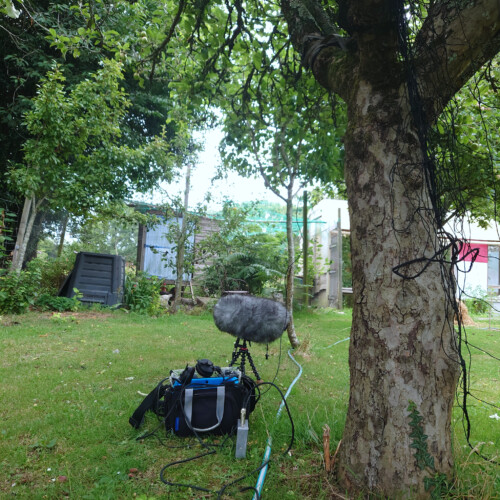Sounds Of The Inner Tree
2023, Sound Art
Environmentalism, anti-anthropocentrism
9 audio tracks from inside the trees
By playing this audio, personal data may be transmitted to third-party providers.
Sounds of the Inner Tree
In my project “Sounds of the Inner Tree”, I use acoustic sensors to investigate what a tree hears – and how it sounds itself. I try to listen into the tree and perceive its inner sound spaces.
What do we hear – and what does a tree hear?
It is now scientifically proven that plants can hear. They perceive sound waves and react to them – not to our music, but to sounds that have meaning in their environment.
When we play classical music to plants, it is just noise to them – one sound among many. But they understand certain acoustic signals from their predators. They can react to this, often with chemical defense strategies.
Studies show that plants produce defense substances even when the feeding sounds of insects are merely played to them. They activate protective mechanisms, warn neighboring plants and change their own chemical environment.
In my project “Sounds of the Inner Tree”, I use sensors and probes to investigate what a tree hears – and how it sounds. I try to listen into it in order to grasp its inner sound spaces.
The audio data from the sensors form one sound source, the second is created from the ambient noise around the tree, which I record with microphones. These two levels create a complex auditory image that encompasses both the external sounds of the forest and the internal vibrations and resonances of the wood.
I am interested in how the airborne sound and the ambient noise are reflected inside the tree:
How much sound penetrates – and how deep?
Does this change the structure of the wood? Or even effects on growth and communication?
My recordings show that there is a rich acoustic field within the tree:
I can hear insects living in it, bumblebees in the roots, beetle larvae eating through the wood or pupating there. Birds and small rodents can also be heard – often only as barely perceptible tracks.
These inner and outer soundscapes reveal what plants hear – and which sounds they produce themselves.
Weather, wind and sun shape these acoustic processes just as much as the entire forest as a habitat, which resonates as a living ensemble of animals, insects and plants.
The project is an attempt to distance ourselves from an anthropocentric point of view – and to adopt a different perspective: that of a listening, sounding nature.

